A hillside house in Arkansas by SILO AR+D is a metal-clad statement
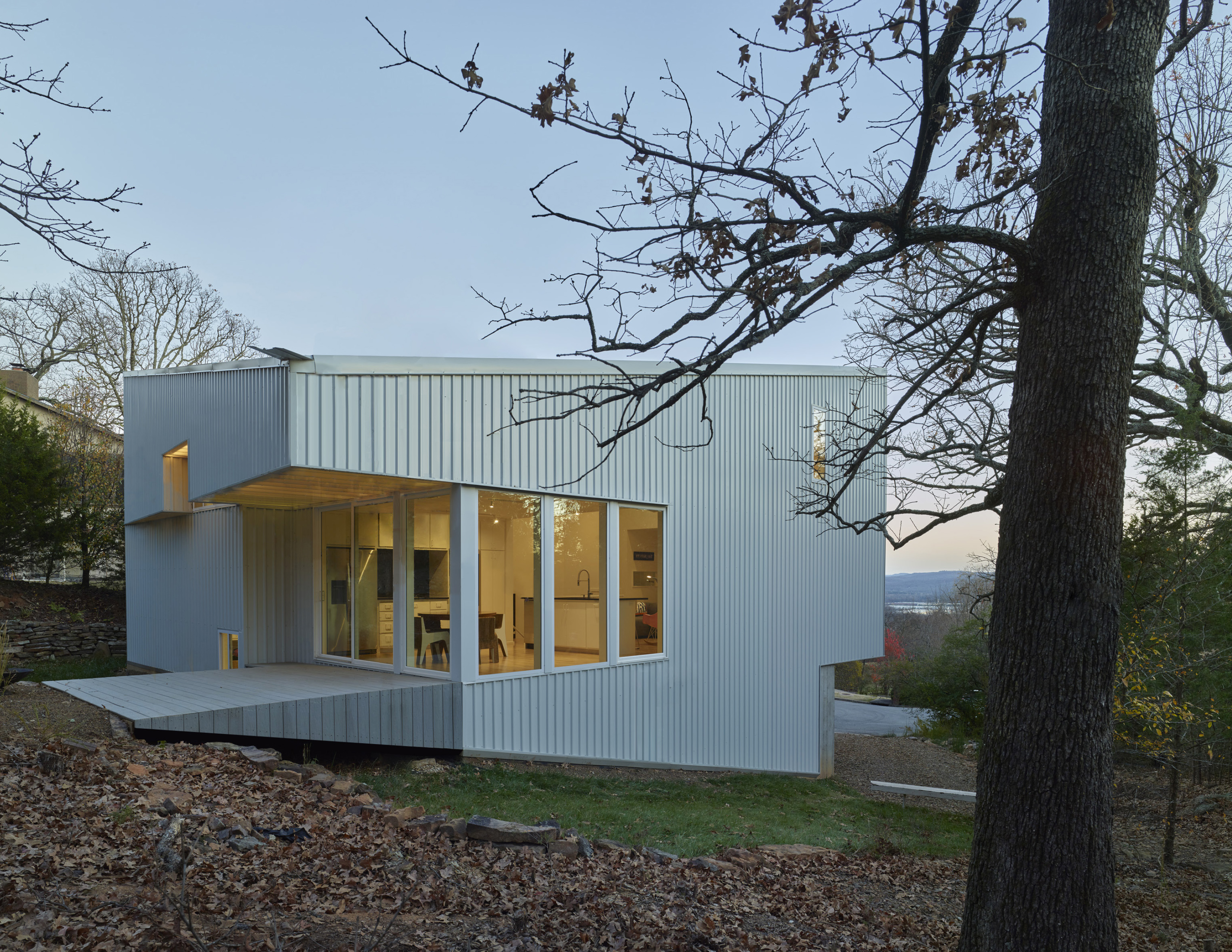
This house in Arkansas takes a determined stance against camouflaged contextualism and goes straight for bold, unapologetic contrast. Designed by SILO Architecture Research and Design, the modestly budgeted and relatively compact 1,750 sq ft family home exploits a verdant sloped three-quarter-acre site.
Clever use of material and form make a strong architectural statement that transcends the budget and makes the most of the views and landscape. The architects describe Hillside Rock House as being ‘mineral-like,’ as if it were a natural growth that has emerged from the landscape. This juxtaposition is emphasised by the graphic purity of the wraparound façade, which also contains several allusions to modern architecture of the recent past, from Adolf Loos to Venturi Scott-Brown. Solidity is emphasised by the uniform application of white corrugated metal cladding.
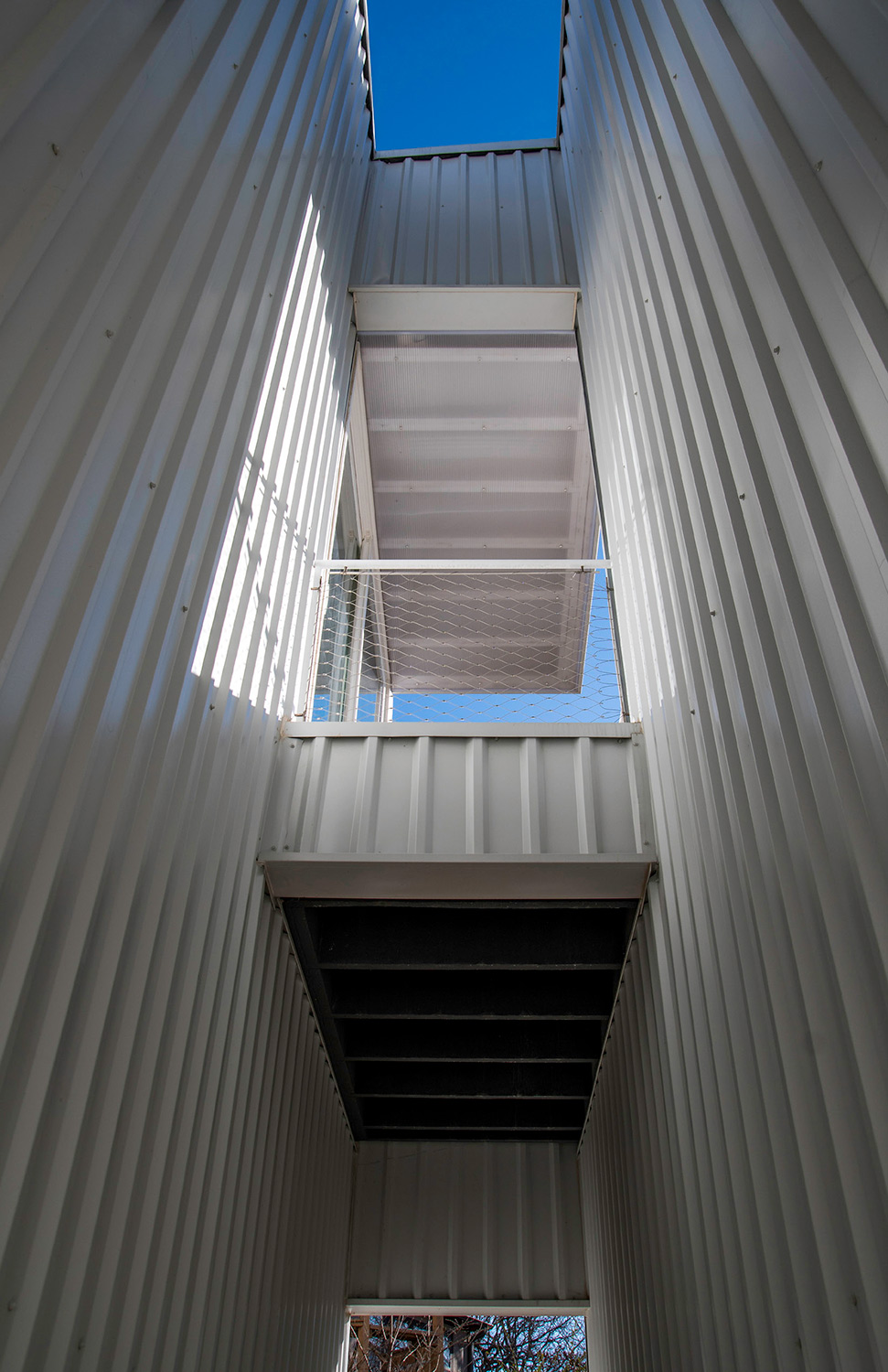
The entry light well.
The site is located east of Fayetteville, out past the suburbs where development starts to rub up against true wilderness. This is a quintessentially American condition, is enhanced by far-reaching views across the wooded site in the city’s Mount Sequoyah neighbourhood.
Inside, living accommodation is pushed to the corners away from a central spine of circulation space, ensuring that the principal living rooms and bedrooms have dual aspect views and balconies that are carefully orientated to look across specific swathes of landscape; each of the three terraces has a very different aspect, including an impressive view of the Boston Mountains to the south. This multi-faceted outlook created by the plan is also a reference to the façade geometry and the house’s rocky, mineral qualities.

View from the upper landing.
The interior is arranged across central levels around a central wooden staircase, supplemented by internal galleries and ladders. There is a strong sense of being up in the trees here and the house gets a correspondingly bold seasonal display as the autumn colours seep into the interior. White walls are paired with concrete and timber floors, the latter treated as if it is a solid, monolithic block.
SILO AR+D was set up by Marc Manack and Frank Jacobus and currently concentrates its work in and around Ohio, North Carolina, and Arkansas. Manack and Jacobus have a focus on residential and institutional projects and describe their work as ‘an abstract departure from the organic romanticism’ of so much contemporary regional architecture. The Hillside Rock House celebrates its abstract form without being disconnected from its bucolic surroundings.
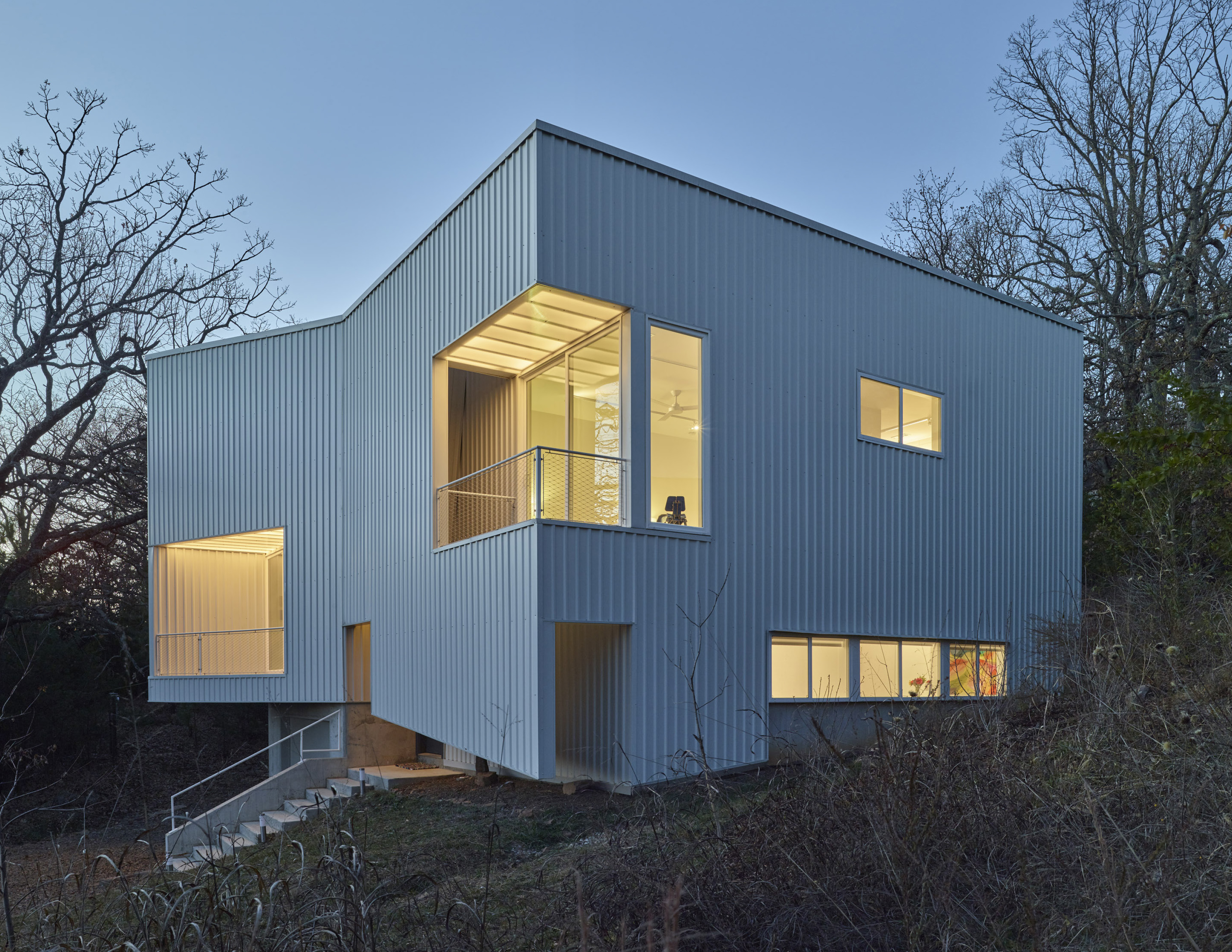
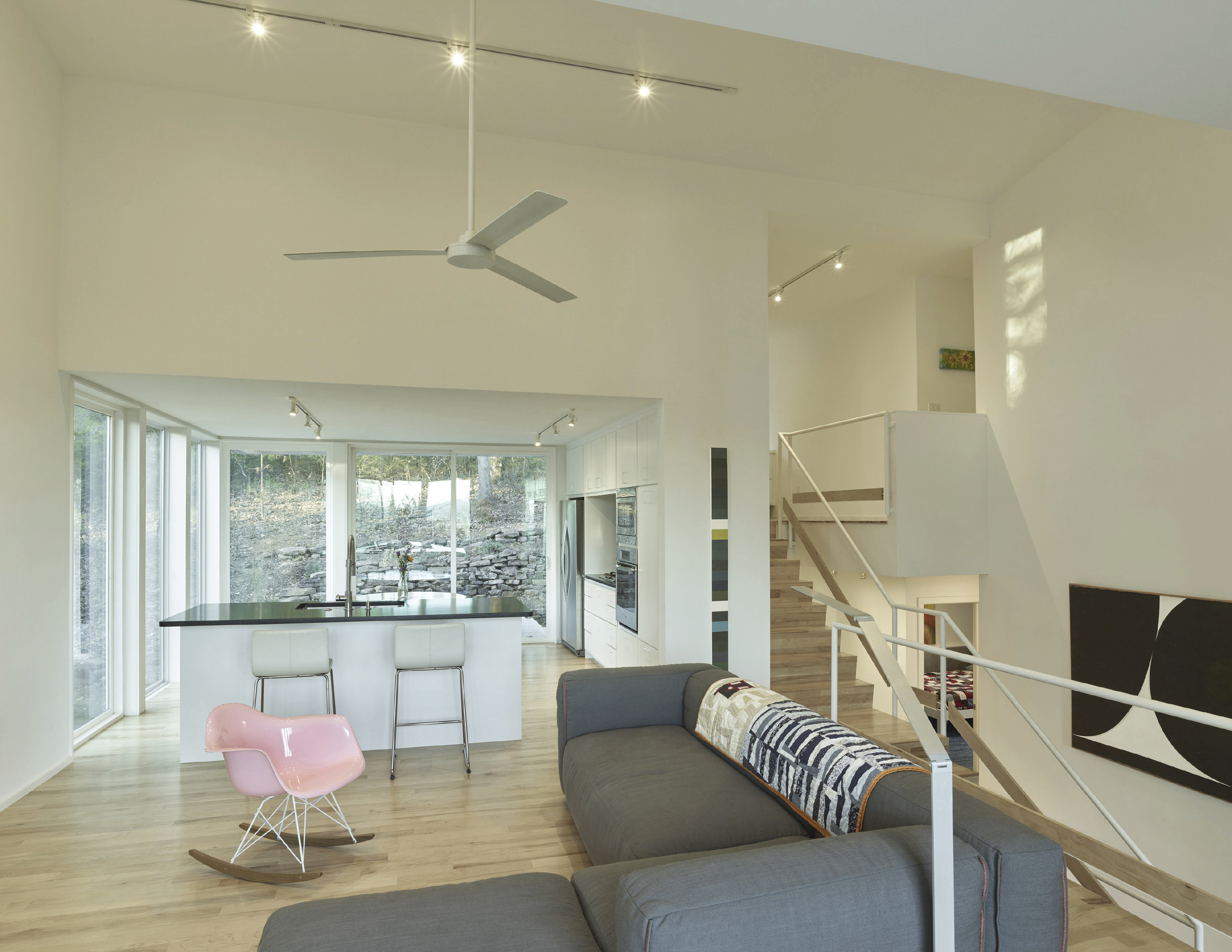
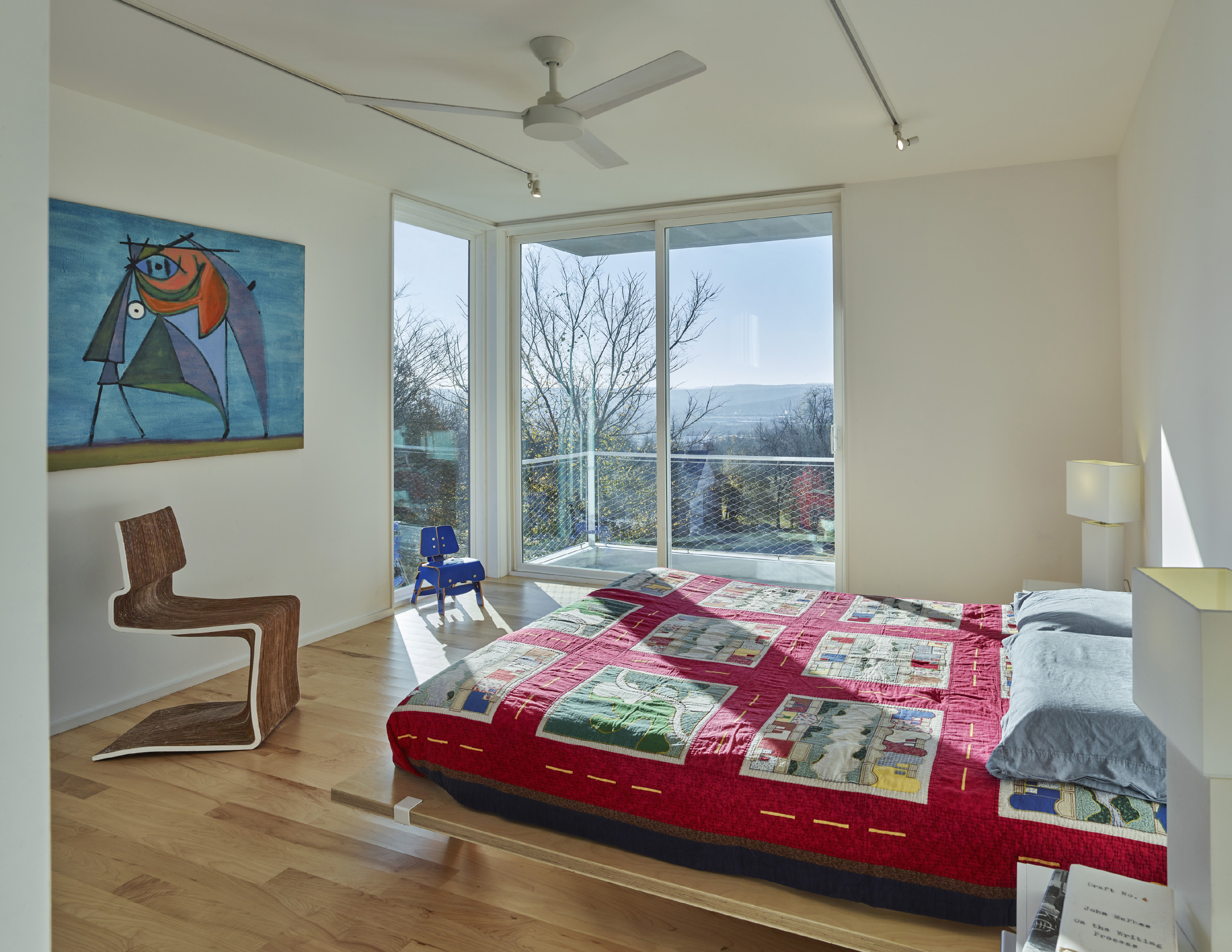



INFORMATION
For more information, visit the SILO AR+D website
Receive our daily digest of inspiration, escapism and design stories from around the world direct to your inbox.
Jonathan Bell has written for Wallpaper* magazine since 1999, covering everything from architecture and transport design to books, tech and graphic design. He is now the magazine’s Transport and Technology Editor. Jonathan has written and edited 15 books, including Concept Car Design, 21st Century House, and The New Modern House. He is also the host of Wallpaper’s first podcast.
-
 Australian studio Cordon Salon takes an anthropological approach to design
Australian studio Cordon Salon takes an anthropological approach to designWallpaper* Future Icons: hailing from Australia, Cordon Salon is a studio that doesn't fit in a tight definition, working across genres, techniques and materials while exploring the possible futures of craft
-
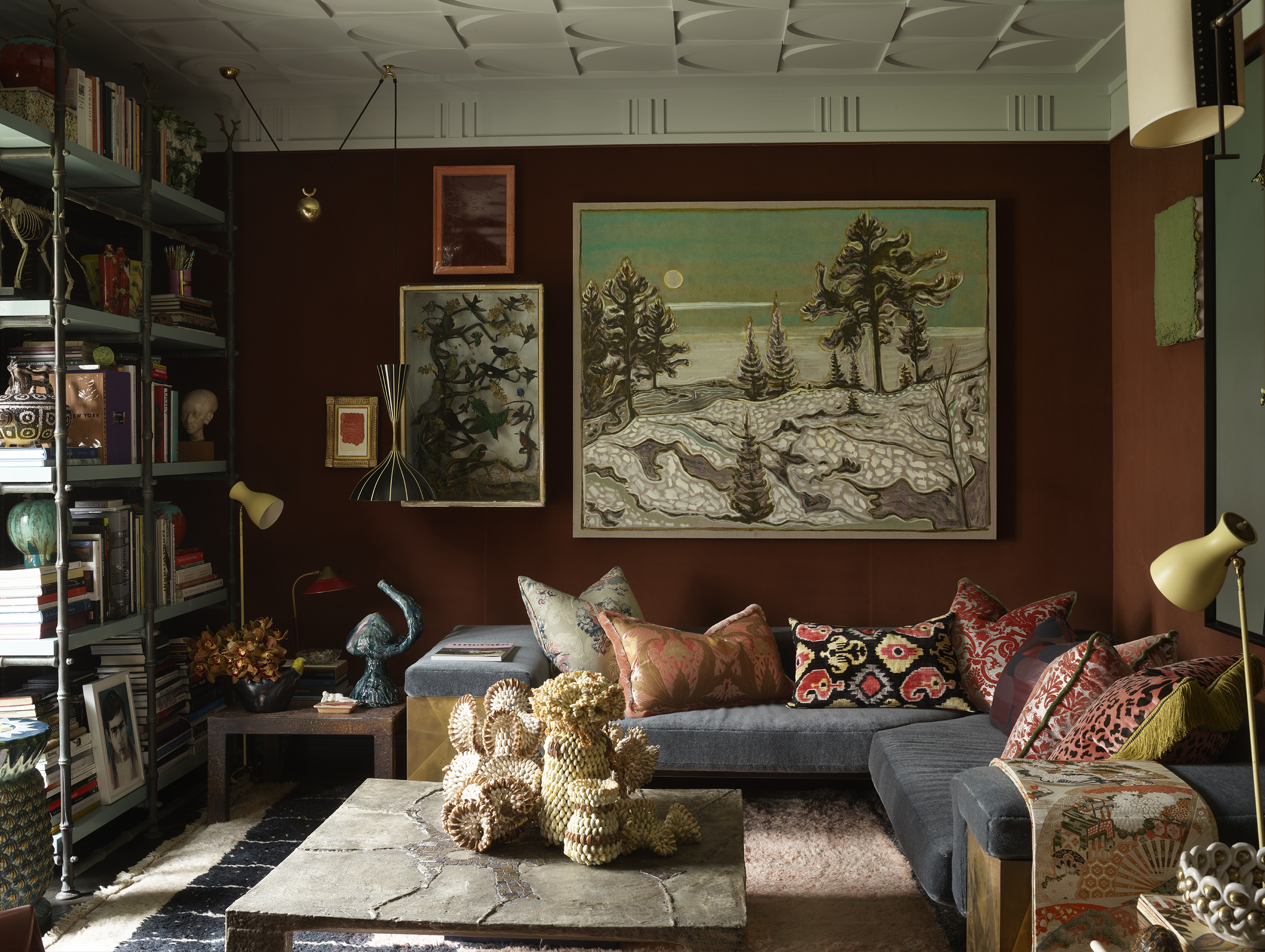 This designer’s Shoreditch apartment is ‘part grotto, part cabinet of curiosities’
This designer’s Shoreditch apartment is ‘part grotto, part cabinet of curiosities’The apartment serves as Hubert Zandberg’s ‘home away from home’, as well as a creative laboratory for his design practice. The result is a layered, eclectic interior infused with his personality
-
 Curvilinear futurism meets subtropical beaches at Not A Hotel’s ZHA-designed Okinawa retreat
Curvilinear futurism meets subtropical beaches at Not A Hotel’s ZHA-designed Okinawa retreatZaha Hadid Architects has revealed the design for the first property in Not A Hotel’s futuristic new Vertex collection, coming soon to southern Japan
-
 Step inside this resilient, river-facing cabin for a life with ‘less stuff’
Step inside this resilient, river-facing cabin for a life with ‘less stuff’A tough little cabin designed by architects Wittman Estes, with a big view of the Pacific Northwest's Wenatchee River, is the perfect cosy retreat
-
 Remembering Robert A.M. Stern, an architect who discovered possibility in the past
Remembering Robert A.M. Stern, an architect who discovered possibility in the pastIt's easy to dismiss the late architect as a traditionalist. But Stern was, in fact, a design rebel whose buildings were as distinctly grand and buttoned-up as his chalk-striped suits
-
 Own an early John Lautner, perched in LA’s Echo Park hills
Own an early John Lautner, perched in LA’s Echo Park hillsThe restored and updated Jules Salkin Residence by John Lautner is a unique piece of Californian design heritage, an early private house by the Frank Lloyd Wright acolyte that points to his future iconic status
-
 The Stahl House – an icon of mid-century modernism – is for sale in Los Angeles
The Stahl House – an icon of mid-century modernism – is for sale in Los AngelesAfter 65 years in the hands of the same family, the home, also known as Case Study House #22, has been listed for $25 million
-
 Houston's Ismaili Centre is the most dazzling new building in America. Here's a look inside
Houston's Ismaili Centre is the most dazzling new building in America. Here's a look insideLondon-based architect Farshid Moussavi designed a new building open to all – and in the process, has created a gleaming new monument
-
 Frank Lloyd Wright’s Fountainhead will be opened to the public for the first time
Frank Lloyd Wright’s Fountainhead will be opened to the public for the first timeThe home, a defining example of the architect’s vision for American design, has been acquired by the Mississippi Museum of Art, which will open it to the public, giving visitors the chance to experience Frank Lloyd Wright’s genius firsthand
-
 Clad in terracotta, these new Williamsburg homes blend loft living and an organic feel
Clad in terracotta, these new Williamsburg homes blend loft living and an organic feelThe Williamsburg homes inside 103 Grand Street, designed by Brooklyn-based architects Of Possible, bring together elegant interiors and dramatic outdoor space in a slick, stacked volume
-
 This ethereal Miami residence sprouted out of a wild, jungle-like garden
This ethereal Miami residence sprouted out of a wild, jungle-like gardenA Miami couple tapped local firm Brillhart Architecture to design them a house that merged Florida vernacular, Paul Rudolph and 'too many plants to count’